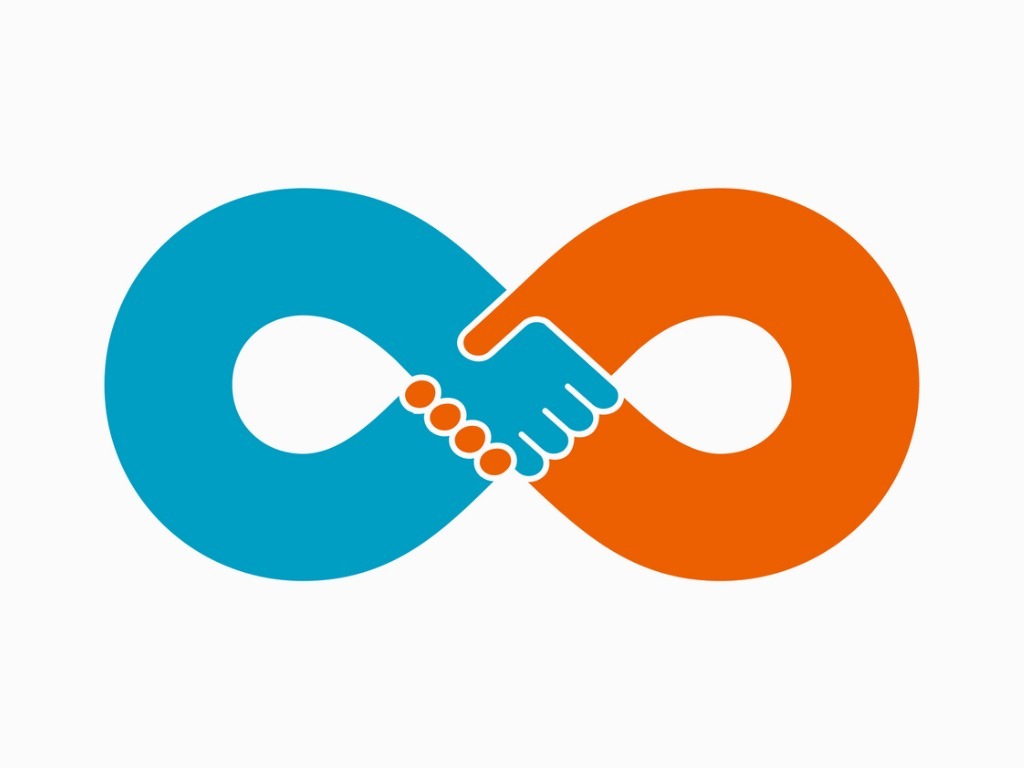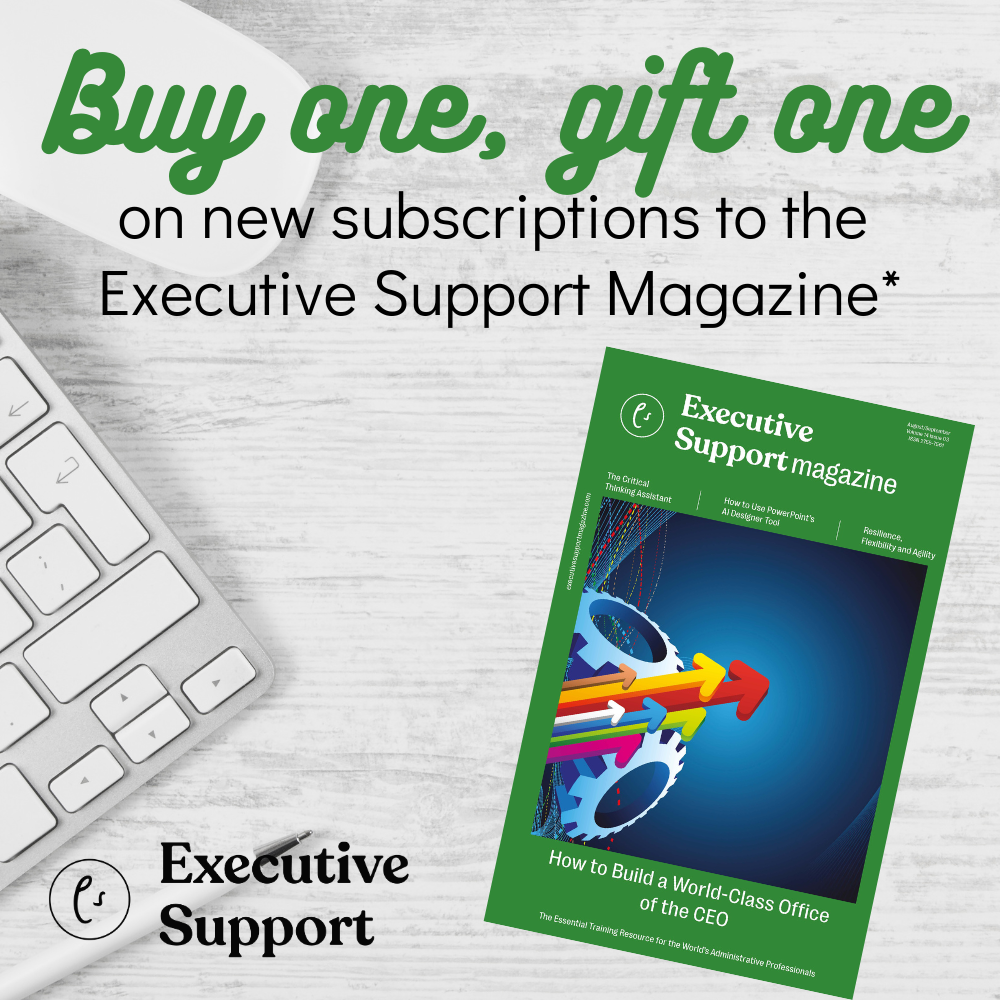
In this extract from the book The Founder & The Force Multiplier: How Entrepreneurs and Executive Assistants Achieve More Together, Hallie Warner details her methods for becoming a force multiplier
Executive Assistants are the ultimate force multipliers and project managers. Their project just happens to be their Executive. From purchasing unique gifts for a business associate, to managing internal and external communication, preparing speeches, reorganizing staff roles, creating business plans, and everything in between, they’ve got it covered.
Executive Assistants are problem-solvers and fixers. They are some of the most resourceful and connected individuals in your organization. If you have a challenge, bring it to your nearest EA, and I guarantee she will have a solution for you by the end of the day. Executive Assistants are leaders and seeing them as anything else is a complete underestimation of their ability and a disservice to the Executive and the company.
The Executive Assistant position is even more unique when you’re talking about working with a founder, entrepreneur, or public figure. In April 2018, I attended a retreat just outside Seattle where Monique Helstrom, former Chief of Simon Sinek, and currently a public speaker and solutions expert/founder at www.OnPoint.Expert, was a guest speaker. She was explaining a bit about her position and told us that she was recently talking to another assistant who works for a prominent thought leader/public speaker. While in theory they are in the same position – EAs to well-known thought leaders, authors, and public speakers – Monique said their roles were completely different.
I think that is a perfect illustration of why the role is so hard to define in any real specifics. A job description for Simon’s EA, Adam’s EA, or Elon Musk’s EA could all be very different. The Executive Assistant position varies so significantly depending on what industry you work in, how established the organization is, and the personality and behavior of your Executive.
As Adam mentioned previously, a leader’s 20 percent is casting the vision, establishing clear direction and focus, and removing roadblocks for the team. Clear and concise. Well, what about an EA’s 20 percent? It tends to get a bit murky, but I think this sums it up:
An Executive Assistant’s 20 percent is ensuring the objectives, goals, and vision of the Executive are executed.
I have been the Executive Assistant, and now Chief of Staff, for over eight years with the same Executive, yet my job today looks nothing like it did eight years ago. The only constant is that I am still responsible for, and committed to, ensuring that Adam’s vision is implemented.
Let’s take that fairly abstract idea and put it into practice. In theory, the Executive Assistant’s 20 percent is the Entrepreneur’s bottom 80 percent, right? She handles all the miscellaneous tasks and administrative responsibilities, allowing the Executive to stay focused on leadership, strategy, business development, and communication. But we all know EAs aren’t just going to focus on the 80 percent; part of their job is helping their Executive manage his 20 percent. Like Adam said, an EA focuses 100 percent on 100 percent of the job.
Adam has a really great analogy for this concept, that I like to call the 0-10 Principle. As a visionary, Adam has brilliant ideas on the daily. They may not be completely fleshed out, but he has the spark and then sees the end result crystal clearly. It is my responsibility to take that idea from a 2 to a 9, then bring it back to him so he can do his final finessing to bring it to a 10. Here’s what that looks like in practice. Adam wants to create an inspirational speaker series that raises funds for his foundation. Great! That’s at about a 2. I will then take that idea, gather the necessary people, create a timeline, budget, put together a marketing plan, interview speakers, plan the event, and come back to Adam with a final plan, including the speaker lineup. He will offer additional insight, perhaps tweak the speaker order, and come up with an overarching theme for the night. Now we’ve got a 10.
That is how Executive Assistants help their leaders with their 20 percent. You can apply the concept to almost every aspect of your Executive’s 20 percent, from drafting a letter to include in the company’s annual report, to revamping his blog, to preparing for a quarterly off-site leadership meeting, to planning a 40th birthday trip for his brother. An Executive Assistant manages the people, details, timelines, etc., to make an idea come to life. This can happen on a large scale, like helping him write a book, or on a smaller scale, like choosing the perfect anniversary gift for his wife. Let’s break this down even further and look at how an EA helps the Executive with his 20 percent.
Force Multiply the Vision
Communicating the vision is perhaps the most critical component of an Executive’s job. Casting the vision wide and often through strategic branding initiatives generates new business, attracts talent, and boosts employee engagement. Branding and casting the vision go hand in hand.
Executive Assistants can force-multiply the vision by scheduling regular company updates. These can be in the form of town halls, a letter from the CEO in the annual report, daily blog posts, quarterly video announcements, weekly emails, monthly company meetings, etc. What matters here is that there is cadence to the communication and that the leader is casting the vision and keeping the team updated and informed regularly. It is the EA’s responsibility to schedule these, make sure the cadence is kept, and to draft these letters, video scripts, newsletters, and so forth. Make sure the CEO’s vision is heard often!
In addition, along with the marketing or brand-strategy teams, an EA must specifically review the Executive’s social media regularly to ensure that the messaging is in line with the company’s mission and the Executive’s vision. Once the brand is established, the EA must protect it and ensure that the messaging is consistent across all channels. How your Executive shows up at church needs to be the same way he shows up on YouTube.
EAs are in a unique position to pitch their Executives for interviews on blogs, national media publications, podcasts, radio shows, etc. They know their Executive’s story; they know his language and how he would answer questions. Submit the Executive for awards and for as many media mentions as makes sense. The EA can craft the message that the Exec wants to be heard, and usually these initial media mentions lead to even bigger opportunities. Don’t be afraid to start small and build up the brand presence. It all serves to ensure your leader’s vision is heard.
The EA can also help the Executive write a weekly blog or host a weekly YouTube or Instagram show. The key is consistently delivering the vision and positioning your Executive as a thought leader in his industry.
Force Multiply Communication
Casting the vision means communication with both internal and external stakeholders, so how can an EA enhance these activities to maximize her leader’s reach?
First, the EA can and should listen in on calls and participate in meetings to make note of anything that the Executive says will be done, delivered, or followed up on. Does the Executive say he’ll make an introduction or get the name of a book to someone? It is the EA’s job to ensure that promises made are promises kept.
Managing internal and external relationships is critical. The EA can also force-multiply a leader’s communication by maintaining a database that houses important, and sometimes seemingly irrelevant, information about people. This can be family members, employees, candidates, vendors, community members, former employees, competitors, business leaders, etc. As the EA and Executive meet with people and conduct research or meeting prep, store any details about the meeting or the individual. Set reminders for anniversaries, birthdays, or important life milestones. I recommend using an inexpensive customer relationship management system (CRM) so you can set tasks and follow-up reminders, so you don’t miss an important date.
Create a VIP list of people with whom the Executive wants to either maintain or create a relationship. Then set up Google alerts that keep you in tune with what these people are doing, awards their companies receive, etc. It’s a perfect opportunity for the Executive Assistant to remind the Executive to reach out, call, email, or send a handwritten note. The Executive will run into these players at conferences or networking and social events. Keep this information handy so you can pull it out and give it to the Executive as a quick refresher before he goes to a community event and forgets to congratulate a potential business partner on their recent merger.
Don’t forget, the art of the handwritten note is not dead! Incorporate handwritten notes into the correspondence with the Executive’s VIP list. It could be one of the most impactful ways to maximize the Executive’s reach and build relationships. Whether that is thanking someone for coming in to meet with the Executive, or congratulating a competitor on building a new office, handwritten notes get noticed. Pop a business card in there (because not everyone can interpret the Executive’s handwriting and signature like the EA can).
To really maximize the company’s reach, the EA should write thank-you and general notes to vendors or, for example, to the concierge who went above and beyond to help book a massage for the Executive when he arrived at their hotel. The more relationships that the EA can form, the better; this will only help her help the Executive. You never know when a kind word or just knowing the name of the right person at a restaurant will come in handy. Provide value, expecting nothing in return, and it will be returned tenfold.
If the EA travels with the Executive for speaking engagements or if she hosts training events where the Executive is the keynote presenter, she must pay attention to the audience. This is a great way to ensure you are maximizing your leader’s communication. What content is resonating? What content could be removed for the next training event? After the event, he can update and refresh his content accordingly. EAs are the eyes and ears while Executives are presenting. Watch the room. Who is fully engaged and asking questions? Who is leaving the room every five minutes? Is there talent in the room?
After the presentation (especially if it is a daylong event), the Executive is going to be fried, and may need to catch a flight home, and yet everyone is going to want to talk to him. Often, the Executive will have a line of people who want to thank him or ask questions. The EA should position herself next to the Executive to take business cards, take notes on who to follow up with, answer questions, or take photos. And, perhaps most importantly, to grab the Executive and steer him toward the exit so he doesn’t miss his Uber!
Force Multiply Focus, Clarity and Direction
This is all about leading and managing up, so the Executive is making the right decisions, has the right meetings on his calendar, and is in relationships with the right people in order to achieve the company’s objectives. If one of the Executive’s primary goals is to ensure the team is on track and to focus on what must be done that day, week, or month, then that’s the Executive Assistant’s goal too.
To help your leader with the focus, clarity, and direction of the organization, when scheduling or drafting regular communication for him, make sure the message is clear and ties back into specific tasks that keep everyone focused.
Furthermore, during key leadership meetings, note all action items and follow up accordingly. If there are no clear action items, do not leave the meeting without everyone agreeing on what the next best steps are or what the course of action is and who is accountable for what activities. Didn’t catch it in the meeting? Make sure you follow up with each stakeholder and communicate the action plan to everyone by the end of the day.
Perhaps most importantly, when the Executive is getting hit from multiple angles or when he starts chasing a shiny object, it’s the EA’s duty to remind him of what is important and what the team had agreed to focus on that week, month, or quarter. Entrepreneurs are visionaries and have endless ideas. Make note of them and if they aren’t part of the overall goals, table them for now. If the Executive asks about them twice, then it’s time to bring them to the forefront and get his buy-in that they should be moved to the 20 percent for both the Executive and the EA to tackle.















